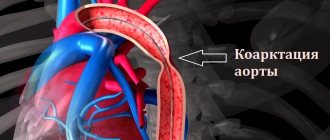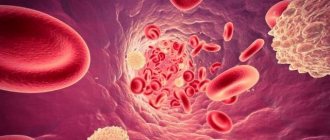Chronic lymphocytic leukemia is a malignant lymphoproliferative disease in which the tumor cells are pathological B lymphocytes that can accumulate in the bone marrow, peripheral blood and lymph nodes. Normally, B lymphocytes during their life transform into an immunoglobulin-secreting cell, which provides acquired immunity. Tumor B-lymphocytes are deprived of this function, and, thus, the patient’s immunity suffers and the risk of infectious diseases increases. In addition, as the disease progresses, the production of red blood cells, neutrophils and platelets is impaired, and autoimmune processes may develop. Finally, chronic lymphocytic leukemia can transform into B-cell prolymphocytic leukemia, into well-differentiated non-Hodgkin lymphoma, in particular into diffuse large B-cell lymphoma.
- Reasons for the development of lymphocytic leukemia
- Symptoms
- Diagnosis of chronic lymphocytic leukemia
- Stages of the disease
- Treatment
- Evaluation of treatment effectiveness
- Forecast
Reasons for the development of lymphocytic leukemia
Chronic leukemia is the most common type of leukemia, accounting for up to 30% of the total incidence structure. The incidence rate is 4 cases per 100 thousand population; in persons over 80 years of age, the frequency is more than 30 cases per 100 thousand population.
Risk factors for the development of chronic lymphocytic leukemia are:
- Elderly age. Up to 70% of all identified cases occur in people over 60 years of age,
- Male gender. Men get sick twice as often as women,
- Exposure to ionizing radiation,
- Contact with benzene and gasoline.
Diagnosis and treatment of acute lymphoblastic leukemia in Moscow
If you or a member of your family have signs of acute lymphoblastic leukemia, contact the Medicine Clinic. We offer our patients:
- treatment by oncologists, chemotherapists, and highly qualified hematologists;
- diagnostics using the latest medical equipment;
- stay in a comfortable hospital room under round-the-clock supervision;
- medical service in accordance with the strict standards of world medicine.
Call us to find out the details you are interested in and schedule a consultation.
Symptoms
Chronic lymphocytic leukemia is characterized by a long asymptomatic course; The main reason for visiting a doctor is changes in a general blood test taken as part of a preventive examination or for another disease. The patient may not present active complaints at the time of the initial examination, but often even in this situation an enlargement of the lymph nodes and a change in their consistency to a doughy consistency are already detected. The lymph nodes themselves are not compacted and remain mobile relative to the surrounding tissues. In case of infection, the lymph nodes become significantly enlarged; As chronic lymphocytic leukemia progresses, lymph nodes—primarily those of the abdominal cavity—are capable of forming conglomerates.
The first complaints that arise are usually not specific: increased fatigue, weakness, severe sweating. As the disease progresses, autoimmune manifestations may occur, firstly very hemolytic anemia (in 10-25% of cases) and thrombocytopenia (in 2-3% of cases). Hemolytic anemia develops due to the destruction of red blood cells by the body itself; Most often, like chronic lymphocytic leukemia itself, it develops gradually, but it can also manifest as an acute crisis - with an increase in temperature, the appearance of jaundice, and darkening of the urine. Thrombocytopenia can be a much more dangerous condition due to the development of bleeding, including life-threatening bleeding (for example, cerebral hemorrhage).
In addition, since B lymphocytes belong to the cells that provide immunity, the addition of infectious complications, including opportunistic ones, that is, caused by microorganisms that are constantly present in the human body and do not manifest themselves with an adequate immune response, is typical. Most often, opportunistic infections affect the lungs.
Prevention
There is no specific prevention for this disease. It is important to lead a healthy lifestyle, which includes physical activity, being in nature, proper nutrition, and, if possible, eliminating harmful factors at work and at home. It is necessary to undergo preventive examinations with mandatory blood tests and fluorographic examination.
Patients with stage I-II CLL are able to work, but to prevent the progression of the disease they are contraindicated:
- moderate and heavy physical labor;
- neuropsychic stress;
- work associated with vibration, forced body position, contact with ionizing radiation, toxic factors, hematotoxic poisons, unfavorable microclimatic production conditions.
Diagnosis of chronic lymphocytic leukemia
The diagnosis of chronic lymphocytic leukemia can be suspected when assessing the results of a routine clinical blood test - an increase in the absolute number of lymphocytes and leukocytes attracts attention. The main diagnostic criterion is the absolute number of lymphocytes, exceeding 5 × 10 9 \l and progressively increasing as lymphocytic leukemia develops, reaching numbers of 100-500 × 10 9 \ l. It is important to pay attention not only to the absolute number - if at the beginning of the disease lymphocytes make up up to 60-70% of the total number of leukocytes, then with its further development they can make up 95-99%. Other blood parameters, such as hemoglobin and platelets, may be normal, but as the disease progresses, they may decrease. The absolute criterion for establishing a diagnosis of chronic lymphocytic leukemia is the detection of more than 5000 clonal B lymphocytes in 1 μl of peripheral blood.
A biochemical blood test may reveal a decrease in total protein and the amount of immunoglobulins, but this is typical for later stages of the disease. A mandatory step in the diagnostic search is a bone marrow biopsy. Histological examination of the obtained punctate in the early stages of the disease, as well as in a general blood test, reveals a small content of lymphocytes (40–50%), but with high leukocytosis, lymphocytes can make up 95–98% of the bone marrow elements.
Since changes in the bone marrow are nonspecific, the final diagnosis of chronic lymphocytic leukemia is established on the basis of immunohistochemical studies. The characteristic immunophenotype of chronic lymphocytic leukemia includes the expression of antigens CD19, CD5, CD20, CD23; there is also weak expression on the cell surface of immunoglobulins IgM (often simultaneously with IgD) and antigens CD20 and CD22. The main cytogenetic marker that directly influences the choice of therapy is the 17p deletion. It is advisable to perform an analysis aimed at identifying this deletion before starting treatment, since its identification leads to a change in patient management tactics. In addition to a bone marrow biopsy, in the case of significant enlargement of individual lymph nodes, puncture of them is indicated in order to exclude lymphoma.
Instrumental diagnostic methods include chest x-ray and ultrasound of the most commonly affected groups of lymph nodes and abdominal organs - primarily the liver and spleen, since these organs are most often affected by chronic lymphocytic leukemia.
Stages of the disease
Currently, staging is carried out according to the classification proposed by Binet:
- A - hemoglobin content more than 100 g\l, platelets - more than 100 × 10 9\l, less than three lymphatic areas are affected (these include: cervical lymph nodes, axillary lymph nodes, inguinal lymph nodes, liver, spleen),
- B - hemoglobin content more than 100 g\l, platelets - more than 100 × 10 9\l, more than three lymphatic areas are affected,
- C - hemoglobin content less than 100 g\ or platelets - less than 100 × 10 9\l.
In addition to the Binet classification, the Rai classification is used, mainly used in the USA. According to it, there are four stages of the disease:
- 0 - clinical manifestations include only an increase in lymphocytes of more than 15 × 10 9 in the peripheral blood and more than 40% in the bone marrow,
- I - the number of lymphocytes is increased, enlarged lymph nodes are diagnosed,
- II - the number of lymphocytes is increased, an enlargement of the liver and/or spleen is diagnosed, regardless of the enlargement of the lymph nodes,
- III - there is an increase in the number of lymphocytes and a decrease in hemoglobin level of less than 110 g/l, regardless of the enlargement of the spleen, liver and lymph nodes,
- IV - there is an increase in the number of lymphocytes and a decrease in the number of platelets less than 100 × 10 9, regardless of the level of hemoglobin, enlargement of organs and lymph nodes.
Stage 0 is characterized by a favorable prognosis, stage I and II - intermediate, stage III and IV - unfavorable.
Treatment
Currently, chronic lymphocytic leukemia is highly treatable thanks to a wide range of chemotherapy drugs. It is important to note that current guidelines do not recommend starting aggressive treatment immediately after diagnosis - in cases where clinical manifestations are minimal, active follow-up is possible until indications for specific treatment arise, which include:
- The emergence or increase of intoxication, which is manifested by a loss of body weight by more than 10% over six months, a deterioration in general condition; the appearance of fever, low-grade fever, night sweats.
- Increasing symptoms of anemia and/or thrombocytopenia;
- Autoimmune anemia and/or thrombocytopenia - if the condition is not corrected with prednisone;
- Significant size of the spleen - the lower edge is at a distance of >6 cm or more below the costal arch;
- The size of the affected lymph nodes is more than 10 cm or its progressive increase;
- Increase in the number of lymphocytes by more than 50% in 2 months, or doubled in 6 months.
The main treatment method for chronic lymphocytic leukemia at the moment is chemotherapy. One of the first chemotherapeutic agents that showed its effectiveness in the treatment of chronic lymphocytic leukemia, chlorambucil, is still used today, albeit to a limited extent. Over time, cyclophosphamide has been used instead of chlorambucil, in combination with other drugs, and appropriate regimens (eg, CHOP, COP, CAP) are currently used in young patients with good physical status.
First introduced into clinical practice in the 80s of the last century, fludarabine showed effectiveness in achieving stable remission, exceeding the effectiveness of chlorambucil, especially in combination with cyclophosphamide. It is important to note that this regimen is effective even in the event of a relapse of the disease. The last word in the treatment of chronic leukemia is currently the use of immunotherapeutic agents - drugs from the group of monoclonal bodies. Rituximab has become firmly established in routine clinical practice. This drug interacts with the CD20 antigen, which is limitedly expressed in chronic lymphocytic leukemia, so effective treatment requires a combination of rituximab with one of the accepted chemotherapy regimens, most often with fludarabine or COP. Rituximab alone can be used as maintenance therapy in case of partial response to treatment.
The use of the drug alemtuzumab, which interacts with the CD52 antigen, looks promising. It is also used both alone and in combination with fludarabine.
Separately, I would like to mention chronic lymphocytic leukemia with 17p deletion. This subtype of lymphocytic leukemia is often resistant to standard chemotherapy regimens.
Some success in the treatment of this subtype of lymphocytic leukemia has been achieved through the use of the above-mentioned alemtuzumab. In addition, ibrutinib is a promising drug in this situation. Currently, this drug is used in monotherapy; its combination with various chemotherapy regimens is being studied; A regimen including ibrutinib, another monoclonal body, rituximab, and bendamustine, showed a certain advantage.
Radiation therapy, which a century ago was practically the only treatment option for such patients, has not lost its relevance to this day: it is recommended that it be carried out as part of an integrated approach to the area of the affected lymph nodes if their continued growth is observed against the background of stabilization of other manifestations of the disease. In this case, the required total dose is 20-30 Gy. Also, the radiation method can be used for relapses of the disease.
In the treatment of chronic lymphocytic leukemia, a surgical method has also found its place, which consists in removing the affected spleen. Indications for this intervention are:
- Enlarged spleen in combination with severe anemia and/or thrombocytopenia, especially if chemoresistance is observed,
- Massive enlargement of the spleen in the absence of response to chemotherapy,
- Severe autoimmune anemia and/or thrombocytopenia with resistance to drug treatment.
If resistance to previously used chemotherapy agents develops or if there is rapid progression after treatment, bone marrow transplantation may be performed. Bone marrow transplantation is indicated in first remission for high-risk patients, young patients in the absence of treatment effect, and patients with 17p deletion/TP53 mutation in the presence of disease progression. It is important to note that after transplantation, the use of rituximab and lenalidomide as maintenance therapy is recommended to prevent relapse.
Finally, patients require maintenance therapy, which includes:
- Transfusion of red blood cells for anemia;
- Platelet transfusion for bleeding caused by thrombocytopenia;
- Antimicrobial agents in case of bacterial, fungal or viral infection, as well as for its prevention;
- Use of prednisolone at a dose of 1-2 mg/kg in the development of autoimmune processes.
In the event of a relapse of the disease, treatment tactics depend on a number of factors, such as: previously administered therapy, the timing of the relapse, and the clinical picture. In case of early (that is, occurring within 24 months or earlier) relapse, the main drug is ibrutinib. It is used both independently and as part of the above-mentioned treatment regimen (ibrutinib + rituximab + bendamustine).
Alemtuzumab may be an alternative drug of choice. While demonstrating comparable efficacy to ibrutinib, it, however, exhibits significantly greater toxicity.
Finally, in some patients, bone marrow transplantation can be performed for early relapse of chronic lymphocytic leukemia.
In case of late relapse (occurring more than 24 months after completion of treatment), the main selection criterion is the early therapy performed.
- If previous fludarabine-based therapy was not accompanied by significant toxicity, then you can return to this regimen and also supplement it with rituximab.
- If cytopenia is detected, it is possible to use rituximab in combination with high doses of glucocorticosteroids.
- In case of previous treatment with chlorambucil, the use of regimens with fludarabine or a combination of bendamustine and rituximab is indicated.
- Monotherapy with ibrutinib or its combination with one of the polychemotherapy regimens can also be effective in relapsed chronic lymphocytic leukemia.
Procedures and operations
Stem cell transplantation is important in the treatment of patients. Allogeneic and autologous transplantation can be used. In autologous surgery, the source of hematopoietic stem cells is the patient himself. Cells are harvested during treatment and cryopreserved. In an allogeneic transplant, cells are obtained from siblings or a matched unrelated donor. Allogeneic transplantation can lead to a complete cure, but its disadvantage is complications due to graft rejection (graft-versus-host disease). The high toxicity of allogeneic transplantation limits the possibilities of its use.
AlloBMT has a high curative potential and allows long-term disease control. An important factor that influences the decision to undergo alloHSCT is the lack of response to therapy. In patients with chromosomal aberrations (p53 deletions and 17p13 deletions), allogeneic transplantation is performed in the first line of treatment. After allogeneic transplantation, the relapse rate is reduced, in contrast to auto-HSCT.
Auto-HSCT is performed to secure the first or second remission. It has no significant advantage over standard chemoimmunotherapy and is therefore not standard of care. AutoHSCT may be used in selected cases, for example in Richter syndrome .
Evaluation of treatment effectiveness
Diagnostic studies aimed at assessing the effect of the treatment are carried out no earlier than 2 months after the end of the last course of chemotherapy. The result can be assessed as follows:
- Complete remission: reduction to normal sizes of the liver, spleen, lymph nodes (their increase in size of no more than 1.5 cm is acceptable), reduction in the number of lymphocytes to less than 4 × 10 9 \l in the peripheral blood and less than 30% in the bone marrow, increase in the number platelets more than 100×10 9 \l, hemoglobin - more than 110 g/l, neutrophils - more than 1.54 × 10 9 \l.
- Partial remission: reduction in the size of the lymph nodes, liver and spleen by 50% or more, reduction in the number of lymphocytes in the peripheral blood by 50%, increase in the number of platelets more than 100×10 9 \l, hemoglobin - more than 110 g/l, neutrophils - more than 1, 54×10 9 \l or an increase in any of these parameters by more than 50% from the initial level.
- Signs of disease progression are, on the contrary, an increase in the size of the lymph nodes, liver and spleen by 50% or more, as well as a decrease in the number of platelets by 50% or more from the initial level and a decrease in the number of platelets by 20 g/l or more.
To establish complete remission, it is necessary to meet all of the listed criteria; partial - at least 2 criteria relating to the condition of internal organs, and at least one criterion relating to the cellular composition of the blood.
It should be taken into account that ibrutinib therapy can lead to a complete response in the lymph nodes and spleen, but with preservation of leukocytosis in the peripheral blood. This condition is referred to as partial response with lymphocytosis.
Pathogenesis
Normal B lymphocytes produce antibodies that bind antigens from bacteria and viruses. Foreign antigens of microorganisms are stimuli for the development of lymphocytic leukemia . The tumor substrate is cells that have been in contact with the antigen and turned into memory cells. Constant antigenic stimulation causes the appearance of gene mutations, resulting in neoplastic transformation of B-lymphocytes and the formation of a clone of leukemic cells. The final stage of a B lymphocyte is a plasma cell, and in CLL, due to mutations, lymphocytes do not develop into plasma cells.
The clone of altered malignant cells rapidly proliferates. Proliferation of malignant cells occurs in the lymph nodes and bone marrow in the so-called proliferative centers. A large number of small, mature lymphocytes are formed and accumulate not only in the bone marrow and blood, but also in the lymph nodes, spleen, and liver, causing leukemic infiltration of these organs and disrupting their functions. With a high proliferation rate, the disease will have an aggressive course. However, it has been established that the development of CLL is largely associated with the accumulation of malignant lymphocytes, which live for a long time, than with their proliferation.
Forecast
Significant advances in the treatment of chronic lymphocytic leukemia have made it possible to make this disease potentially curable or to support a person’s life for a sufficiently long time without progression of the underlying disease while maintaining its quality.
On the contrary, without treatment, the disease slowly but steadily progresses, which can cause the death of the patient several years after the onset of the disease, so timely consultation with a doctor and initiation of adequate therapy are very important.
Book a consultation 24 hours a day
+7+7+78
Bibliography:
- Clinical recommendations for examination and treatment of patients with chronic lymphocytic leukemia. Recommendations of the National Society of Hematology. 2014.
- Volkova M.A. Chronic lymphocytic leukemia and its treatment. Attending doctor. 2007, No. 4.
- Michael Hallek. Chronic lymphocytic leukemia. Oncohematology. 2010, volume 3, no. 1. pp. 181-182.
- Fedorov A.B. B-cell chronic lymphocytic leukemia. Clinical oncohematology. Basic research and clinical practice. 2008. P.275-277.
- Fiyya A.T., Frenkel B.I. Chronic lymphocytic leukemia: diagnosis and treatment. Journal of Grodno State Medical University. 2011. No. 4. P. 93-97.
- Nikitin E.A. Ibrutinib in the treatment of chronic lymphocytic leukemia. Clinical oncohematology. 2021. 10(3), p. 282-286.
- Kravchenko D.V., Svirnovsky A.I. Chronic lymphocytic leukemia: clinical picture, diagnosis, treatment. Practical guide for doctors. Gomel, 2021.
Diet
Proper nutrition for chronic lymphocytic leukemia helps maintain the patient’s health. Nutrition should be balanced in essential substances. Patients need complete protein foods, especially after chemotherapy . You can eat lean meat, poultry, fish, and dairy products. Sources of plant protein include nuts, soy products and other legumes, which can be consumed in moderation if tolerated (no bloating).
Carbohydrates are a source of energy, therefore, to replenish energy costs, patients should consume mainly complex carbohydrates: fruits, bread, vegetables, cereals. Fats in the diet should be represented by vegetable oil (cold-pressed oils with a high content of omega-3 fatty acids - flaxseed), nuts, and fish oil. The diet should consist of vegetables, fruits and whole grain products. Each meal should include 150 g of vegetables or fruits (the total amount per day is 500-600 g). On the recommendation of a doctor, a complex of vitamins and microelements can be additionally introduced into the patient’s diet.
General nutritional principles look like this:
- Increase your consumption of grains, fruits, vegetables, and nuts.
- Predominant consumption of fish and healthy oils.
- Fractional meals.
- Monitor your drinking regime. If there are no contraindications, drink up to 2 liters of purified water per day.
- Avoid refractory fats.
- Limit the consumption of simple carbohydrates (sugar, sweets, preserves, jams, sweet pastries).
- Avoid fried and smoked products.
- It is unacceptable to consume products with food additives.








